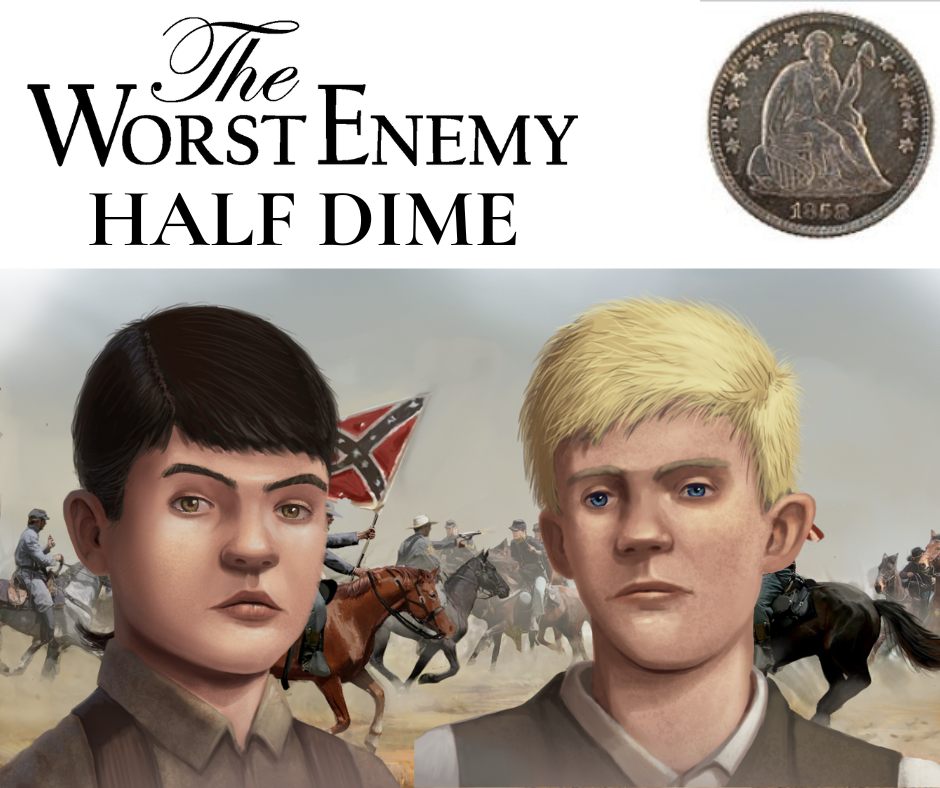
Coins aren’t common currency anymore. In these days of debit and credit cards, most people don’t carry a pocketful of change. When they do, they find that cashiers don’t know what to do with coins. Computerized cash registers have made counting back change a lost skill.
But most of us still recognize coins. Pennies and dimes haven’t changed much in the past few years. The nickel got a bit of an update, with a larger, half forward facing Thomas Jefferson replacing the old side view. Quarters frequently change, with women and states replacing the eagle. Even with these changes of design, most Americans over the age of five can identify their country’s coinage.
America had some coins in the past that are no longer minted. The half dime is one of them.
But most of us still recognize coins. Pennies and dimes haven’t changed much in the past few years. The nickel got a bit of an update, with a larger, half forward facing Thomas Jefferson replacing the old side view. Quarters frequently change, with women and states replacing the eagle. Even with these changes of design, most Americans over the age of five can identify their country’s coinage.
America had some coins in the past that are no longer minted. The half dime is one of them.

The half dime, or half disme (pronounced deem), was a silver coin that had a value of five cents. It might have been the first coin struck by the United States Mint under the Coinage Act of 1792; some experts consider those first strikes to be practice pieces and therefore not real coins. It is a small coin, half the size of a ten-cent piece. Through the years, the pictures on the half dime changed. Early coins had a picture of the face of Liberty, her hair flowing backwards as if she were making great progress. By the 1830s, Liberty’s face had been replaced by a full Liberty seated on a rock (Plymouth Rock? I found no sources that told me.) and holding a shield. 84,828,478 Seated Liberty half dimes were struck for circulation in the mints at Philadelphia, San Francisco and New Orleans between 1837 and 1873.
In the 1860s, the use of nickel to replace silver in coinage became a popular lobbying point. In 1865m the treasury became producing a new three cent coin made out of a copper-nickel alloy. The following year, a five cent pieces was added to American coinage. This new coin was larger than the silver half dime and less easily lost, making it the more popular of the two redundant coins. The half dime was discontinued in 1873.
In the 1860s, the use of nickel to replace silver in coinage became a popular lobbying point. In 1865m the treasury became producing a new three cent coin made out of a copper-nickel alloy. The following year, a five cent pieces was added to American coinage. This new coin was larger than the silver half dime and less easily lost, making it the more popular of the two redundant coins. The half dime was discontinued in 1873.
In The Worst Enemy, Raul Atencio gives Jemmy Martin a half dime as payment for caring for his brother Arsenio. Since the Confederate soldiers and their teamsters had not been paid since leaving Texas, a half dime was a rare and useful gift. Later in the book, Jemmy uses that coin to pay for something that might save another boy’s life.

Jennifer Bohnhoff is a former middle and high school teacher who now writes novels for adults and middle grade readers.
The Worst Enemy, is book 2 of Rebels Along the Rio Grande, her middle grade trilogy set in New Mexico during the Civil War. It is scheduled for release by Kinkajou Press, a division of Artemesia Publishing, on August 15, 2023 but can be preordered on Bookshop.
The Worst Enemy, is book 2 of Rebels Along the Rio Grande, her middle grade trilogy set in New Mexico during the Civil War. It is scheduled for release by Kinkajou Press, a division of Artemesia Publishing, on August 15, 2023 but can be preordered on Bookshop.

The first book in the series, Where Duty Calls, was a finalist for both the New Mexico Presswomen's Zia Award and the Western Writers of America's Spur Award. It can be ordered in paperback or ebook here. A free, downloadable teachers guide is available through the publisher.
Book three, tentatively titled The Famished Country, will be published in spring of 2024.
Book three, tentatively titled The Famished Country, will be published in spring of 2024.






No comments:
Post a Comment